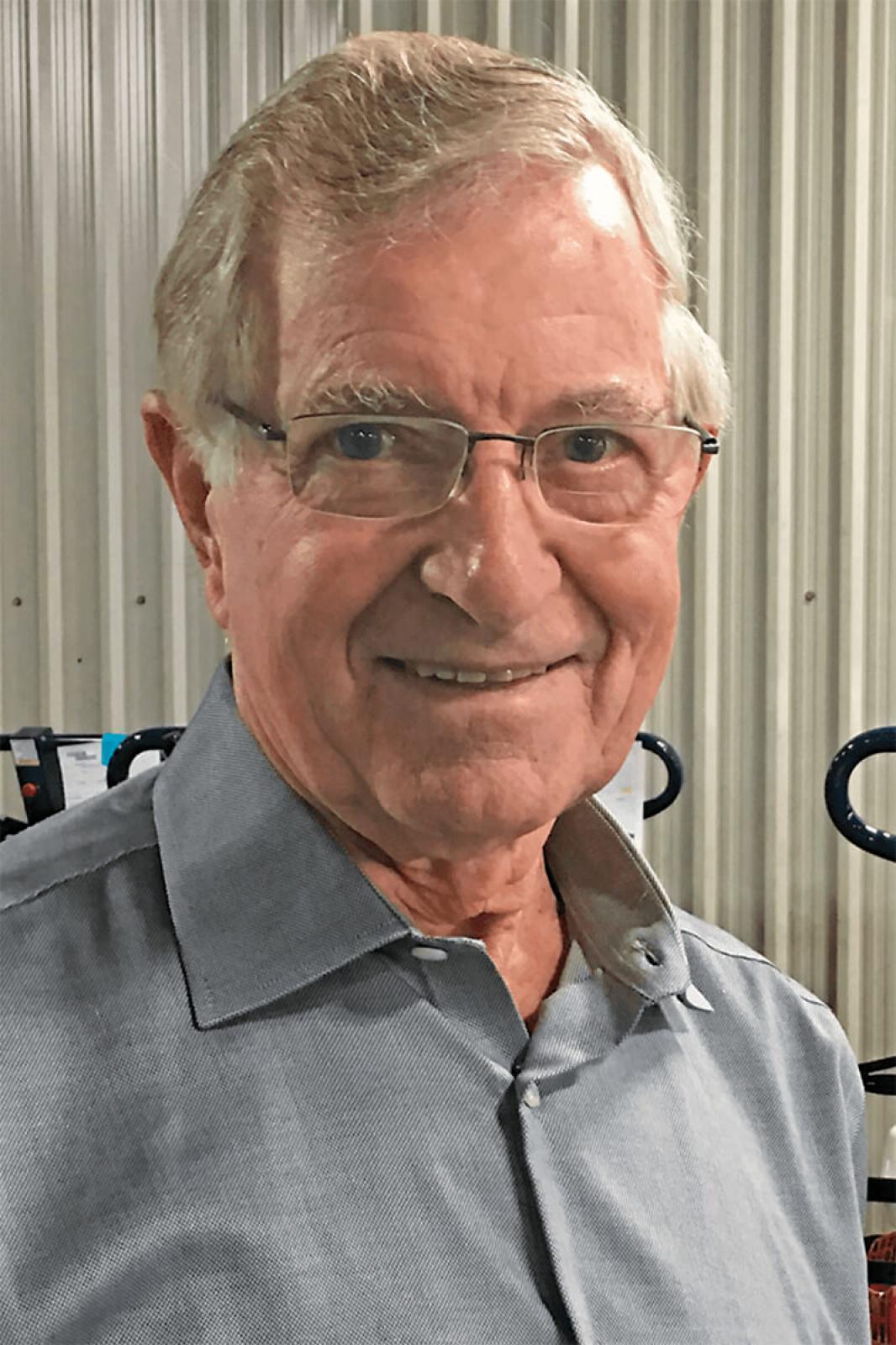April 1, 2019

Gerry Brouwer
It’s all about people
GERRY BROUWER, in the sod business since 1959, is respected around the world as an industry leader. In the mid-1960s, Brouwer invented a tractor-mounted, mechanical sod harvester; it was patented, and Brouwer became one of those rare inventors able to take his idea to market, protect his patent and sell his product worldwide. Today’s Brouwer companies include equipment manufacturer Brouwer Kesmac, Brouwer Sod Farms, and lumber mill Brouwer Wood, all based in Keswick, Ont.
How did you, a farmer, come to be an inventor?
Lots of innovations have been made by farmers; they have a lot of ingenuity. It drove me nuts that it was so hard to find dependable people to harvest sod. My friend had a welding shop, so I put some ideas together and built a prototype harvester. My second prototype led to a royalty agreement with the Ryan Company, who sold traditional sod cutters. Their engineers did not make the changes I recommended, and they were not successful with my idea — in August of 1971 they gave it back to me. By November, I had built a new prototype, so we produced a simple machine that worked, fabricated in Keswick. In 1985 we had 95 per cent of the worldwide market for mechanical sod harvesters.Is there room for new inventions in the horticulture business today?
Absolutely. Automation and more innovation is the only answer.Have other industry players asked you for advice?
Sure, I helped establish the first sod farm on an Israeli kibbutz. It was good for us; if they grew sod, we sold equipment. In 1998, I got a call from Russia, from the agriculture minister’s office in the Kremlin. There was no sod in Russia, and they wanted sod now! The minister’s right-hand man came to Canada, and I later went over as a consultant, helped look for land to establish farms and advised on production methods. Working with the personalities was very interesting.How did you, a farmer, come to be an inventor?
Lots of innovations have been made by farmers; they have a lot of ingenuity. It drove me nuts that it was so hard to find dependable people to harvest sod. My friend had a welding shop, so I put some ideas together and built a prototype harvester. My second prototype led to a royalty agreement with the Ryan Company, who sold traditional sod cutters. Their engineers did not make the changes I recommended, and they were not successful with my idea — in August of 1971 they gave it back to me. By November, I had built a new prototype, so we produced a simple machine that worked, fabricated in Keswick. In 1985 we had 95 per cent of the worldwide market for mechanical sod harvesters.Is there room for new inventions in the horticulture business today?
Absolutely. Automation and more innovation is the only answer.Have other industry players asked you for advice?
Sure, I helped establish the first sod farm on an Israeli kibbutz. It was good for us; if they grew sod, we sold equipment. In 1998, I got a call from Russia, from the agriculture minister’s office in the Kremlin. There was no sod in Russia, and they wanted sod now! The minister’s right-hand man came to Canada, and I later went over as a consultant, helped look for land to establish farms and advised on production methods. Working with the personalities was very interesting.Were the Russians good at launching businesses?
Well, when we were starting the first Russian sod farm, they wanted to locate away from Moscow, but I said you have to be close to your market. I advised they should start with 100 acres, when they wanted to buy 500. I said, “Don’t grow more than you can sell. And you have to promote it!”There were different problems on the farm. For example, it was tough to get Russians to stack sod properly. They did not understand production demands, and took their own time. Many raised potatoes or vegetables as a livelihood on the side, and were eager to leave at 3:00 to do their own thing. If it rained, managers let people go home.
I think my efforts had a lot to do with making Moscow and Russia greener. When I first arrived, the Kremlin was surrounded by weeds, junk and mud, but they cleaned up the boulevards. They never had any grass before, and the sod led to more extensive landscaping. Dutchmaster Nurseries and Vanden Bussche Irrigation were also involved in the efforts. It was quite a switch! Eventually, eight or nine new Russian sod farms were established, and again, we were able to sell equipment.
Your son Eric says you have a hands-on leadership style, and you are known for being fair. Of your four sons, two are working with Brouwer companies. How did you raise them to be right for the business?
I left it all up to my sons, and never interfered. Eric had a career at Magna, then joined Brouwer Kesmac on the manufacturing side. Gerald thought he would try the sod farm for a few months after college — and he never left.
Do you see differences among the generations?
The younger generation is less settled, and more apt to move on. While the older generation is steadier and more apt to stay with employers longer. I feel for the younger generation, as it is almost impossible to buy a home — in the old days, there was more opportunity for young people to advance.How do you nurture talent?
I think people grow themselves. Some people are motivated, and if you assist them, they make a success of their lives. I always enjoyed helping people accomplish something. Business is all about people.It you have a question to suggest, or a mentor to recommend, please write to editor@landscapetrades.com.